Kamome: JR Kyushu’s Scarlet Lady
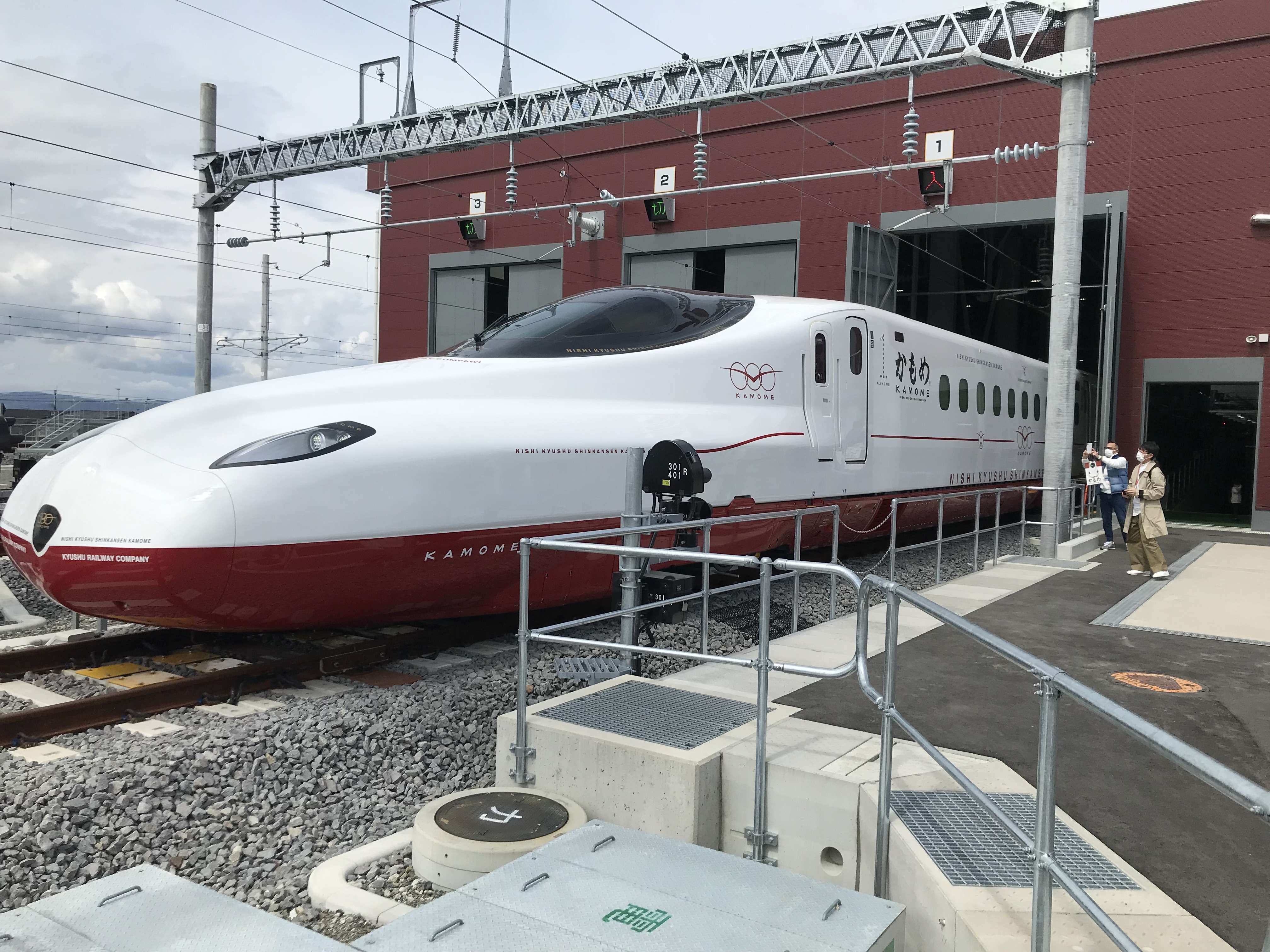
2022 will be a big year for JR Kyushu. No, they won’t be installing soap dispensers at their station restrooms, they’ll be doing something better. Come September 23, 2022, JR Kyushu will open the Nishi-Kyushu Shinkansen. The Nish-Kyushu Shinkansen, also known as the Nagasaki Shinkansen and “Kamome,” will connect Nagasaki with Takeo-Onsen Station in Saga Prefecture. Once negotiations wrap up between JR Kyushu and Saga Prefecture, the new Shinkansen will one day connect with the Kyushu Shinkansen at Shin-Tosu Station. From there, trains can connect to Hakata Station, with some services continuing as far as Shin-Osaka Station. Imagine that?
I don’t have time for imagining. Instead, I’m going to share with you my recent visit to JR Kyushu’s Omura Depot, where the new “Kamome” Shinkansen trains are housed.
About The Kamome
Kamome (Japanese for “Seagull”) will refer to the fastest Shinkansen service which will eventually connect Hakata and Nagasaki in about an hour. This won’t be the first service to use the name “Kamome.” Previous services which used the name include a limited express train between Tokyo and Kobe (1937-43), and between Kyoto and Hakata (1953 – 75). The current Kamome is a limited express train servicing Hakata and Nagasaki via the Nagasaki Main Line. It currently takes about two hours to connect the two cities due to long single-tracked sections, which require passing trains to stop and wait.
The current Kamome will be rebranded as “Relay Kamome” in September, once the new Shinkansen opens. It will connect Hakata to Takeo-Onsen station. From there, passengers will transfer at Takeo-Onsen to the Nishi-Kyushu Shinkansen, where they will speed through mountains and viaducts to Nagasaki Station.
How Did I See Kamome Before Its Opening?
On February 1, 2022, JR Kyushu announced a lottery where winners could see the new N700S series Shinkansen before the general public. 2,600 lucky patrons, including yours truly, were selected to visit Omura Depot for a preview. In fact, I was the only foreigner I saw at the event!
Japanese train companies often hold special events such as these. In Fukuoka, for example, the Fukuoka City Subway opens their depots for guests twice annually. Trains are an integral part of Japanese culture, and rail companies know how to please “densha-okatu” (Train Nerds).
From Kamome to Kamome
I boarded Kamome 61 at Hakata Station a quarter past 8:00 AM. The 6-car 787-series train set, modeled off the French TGV Ressau, originally operated Tsubame services between Hakata and Kagoshima. The 30-year-old train set’s timeless exterior was dulled with a tired, gray interior. While I love looking at these beautiful trains, I think the ride quality could be better.

JR Kyushu revised their timetable earlier in March. Among the changes they made, they replaced the recorded announcements with AI-generated ones. I assume this was a cost-saving measure. Prior to March 12, 2022, the Kamome (and other Limited Express services) featured recorded announcements, including English announcements by Jean Wilson. Now, the bilingual announcements were computer-generated. Worse, the English announcements used Siri’s voice! While I believe it is my responsibility to learn Japanese, the English announcement was choppy and poorly translated. JR Kyushu, I will record your English voices for free if you give me the chance.
The journey was filled with golden scenery, which prominently featured the mountains of Saga Prefecture. As city turned to rice paddy, the Ariake Sea slowly encroached its way towards the tracks, as we twisted and turned along the coast towards Nagasaki.

We made two stops along the way due to the line narrowing to one track. Two Hakata-bound Kamome passed us. Eventually, my train pulled into Isahaya Station in Nagasaki Prefecture, where I disembarked as I transferred trains towards Omura.
Luckily, I caught a Seaside Liner Limited Express, which took me to Omura in five minutes. From there, I checked in with JR Kyushu staff, received a lanyard and some goodies, and boarded a bus past Shin-Omura Station to the Shinkansen Depot.
Entering The Kamome’s Nest
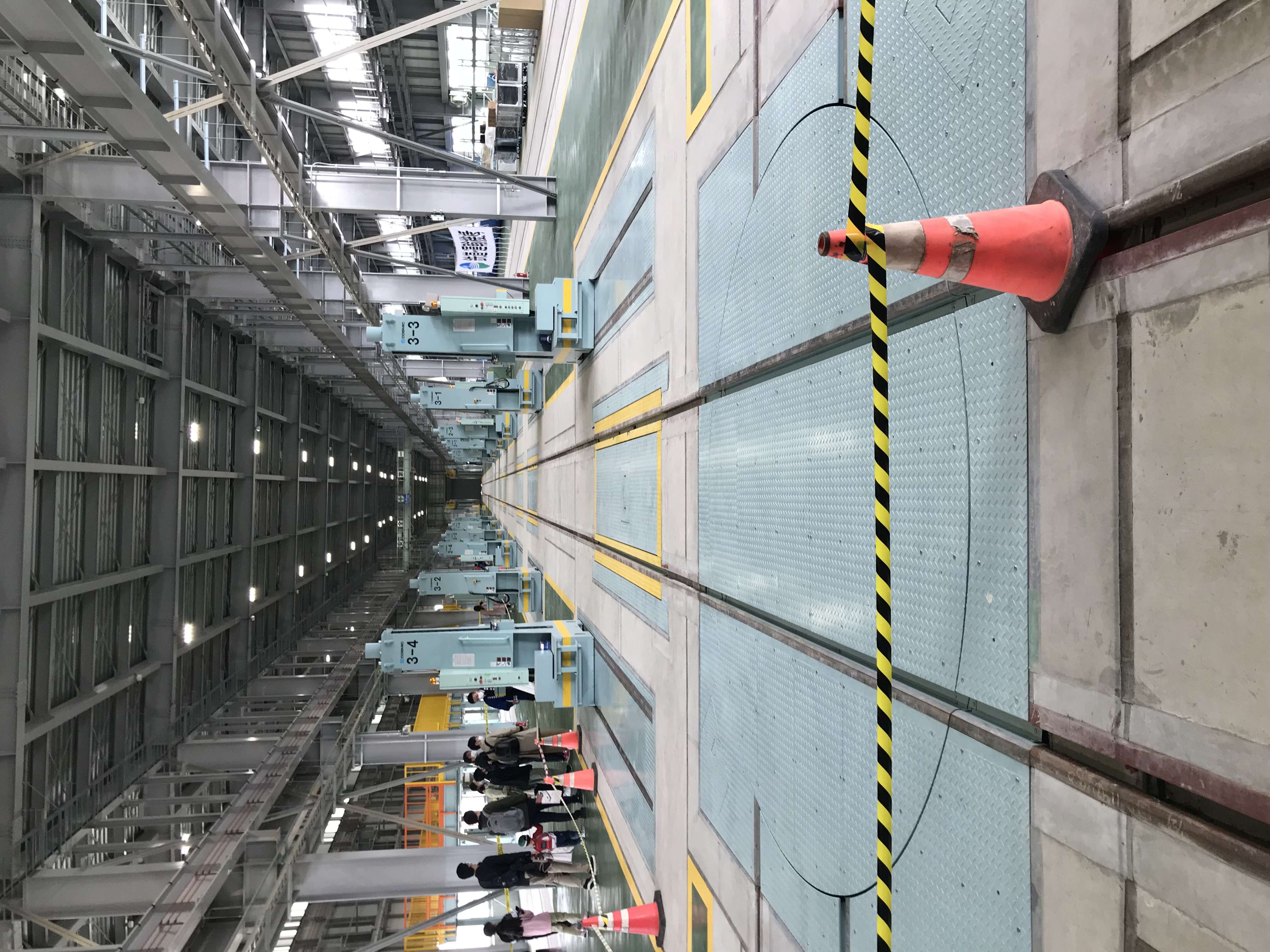
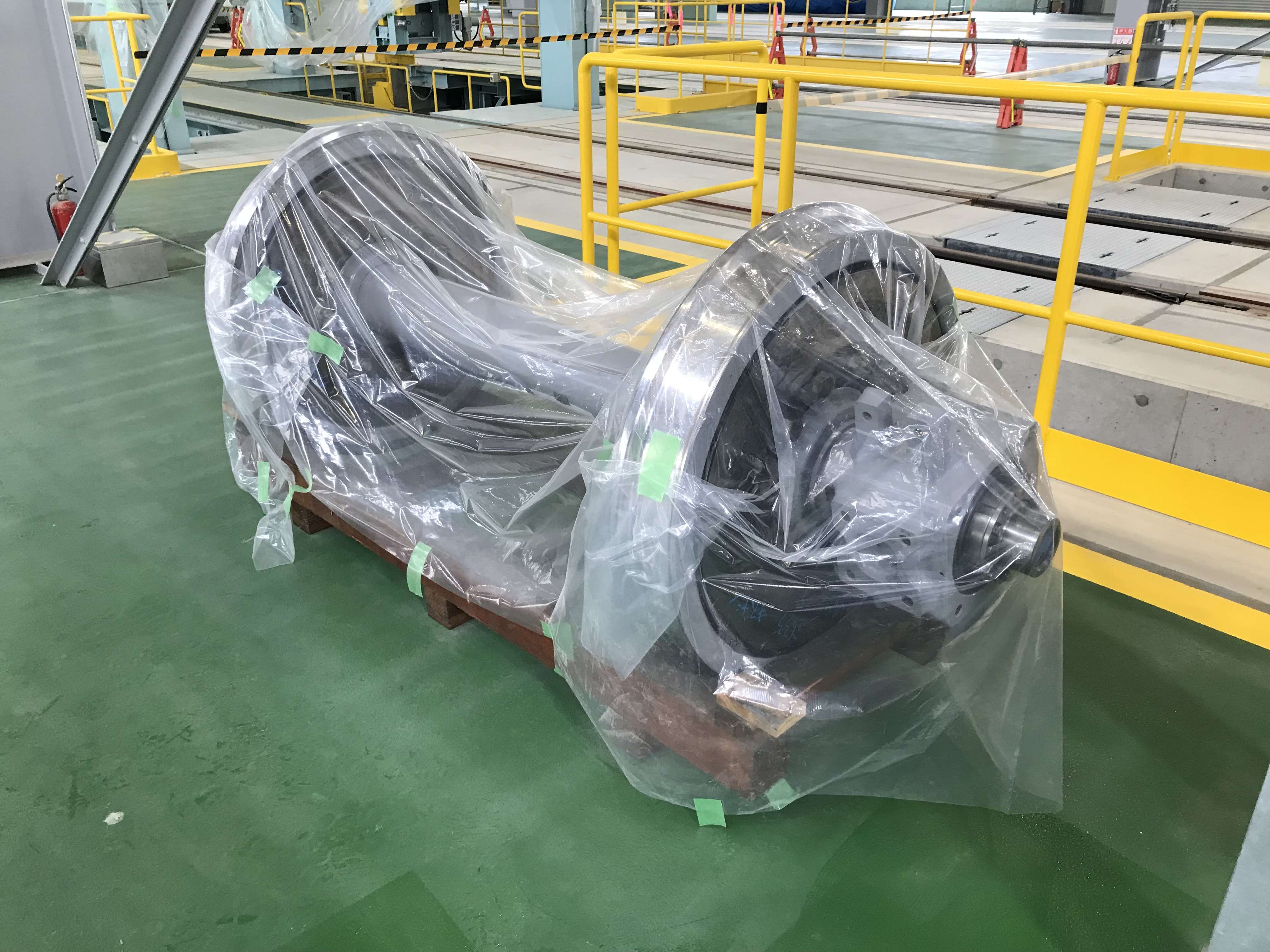
The facility was stunning. It was clean, and everything was brand new. I was guided by staff through a labyrinth of brick sheds and teal-green machinery. Upon entering the sheds, I saw special jacks which lift locomotives from their bogies, as well as painting equipment. I even saw brand new parts across the facility, including a brand new axle, waiting for use on the glistening lines.
As I crossed Bay 32, I saw the new Shinkansen’s underside. With her red bottom showing, The Scarlet Lady invited onlookers to take a peak. No photographs were allowed of her underside, but we were allowed to appreciate her axles and undercarriage as we slowly made our way to the catwalks. Once there, station staff allowed us to photograph The Scarlet Lady. I took a few photos, and along I went.
The Scarlet Lady: JR Kyushu’s N700S Shinkansen
As I walked towards her, I was in awe. The Scarlet Lady’s headlights featured a thin black border, reminiscent of a lady wearing mascara. Her long nose, designed to minimize tunnel boom, was reminiscent of a woman’s curves. Her cab was outlined in black, while her scarlet ribbon adorned her underside. The designers of JR Kyushu’s new N700S Shinkansen outdid themselves.


The Scarlet Lady was adorned with “Kamome,” written in painted hiragana. Her interior evoked a sense of peace and tranquillity with her light colors, wooden seats, and traditional fabrics. Regular class coaches featured rows of seats in a 3-2 configuration, which were upholstered with bright yellow fabrics representing the Chrysanthemum. Her green cars featured 2-2 seating with beige, floral fabrics. These coaches also featured designated wheelchair spaces, something I never saw on a Shinkansen before.
The interior was decorated with artwork and traditional Japanese fabrics. The restrooms were sparkling clean, ready for use by patrons, including those with ostomy bags, and the wheelchair bound. There was even a nursing room on board. JR Kyushu really does put thought into inclusivity when designing their trains. Heck, they even had soap! Now if only JR Kyushu would supply their train stations with soap.

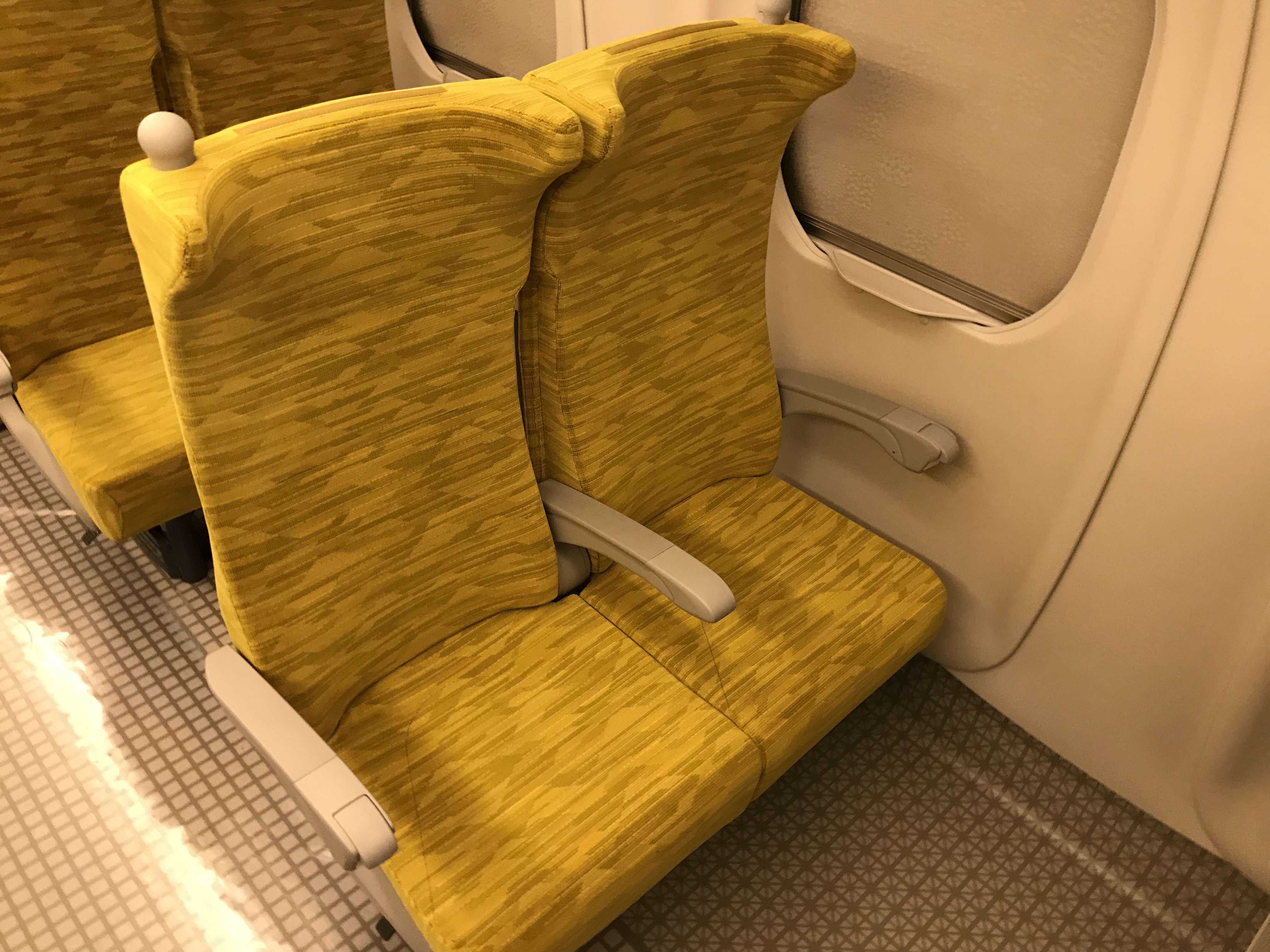
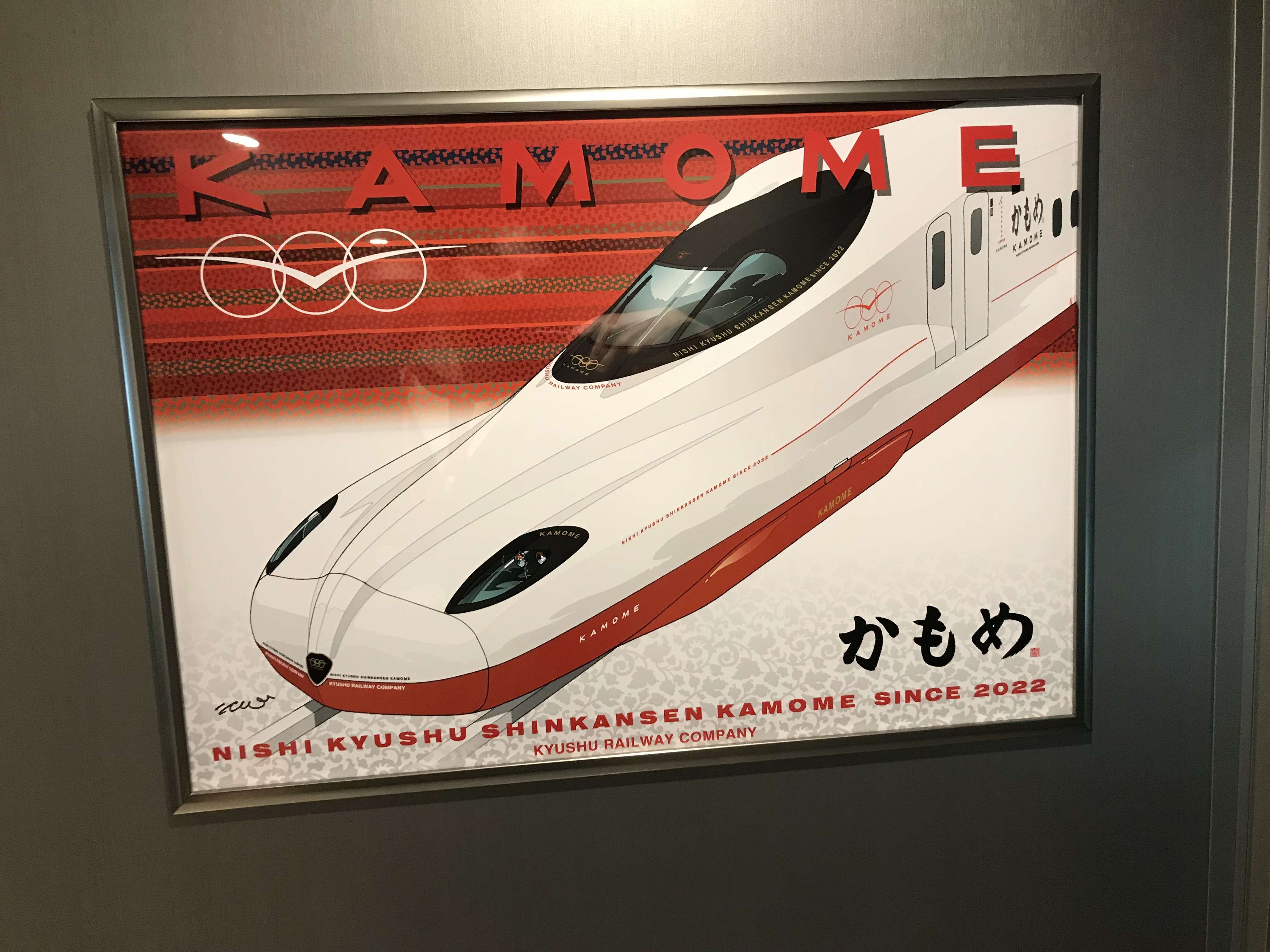
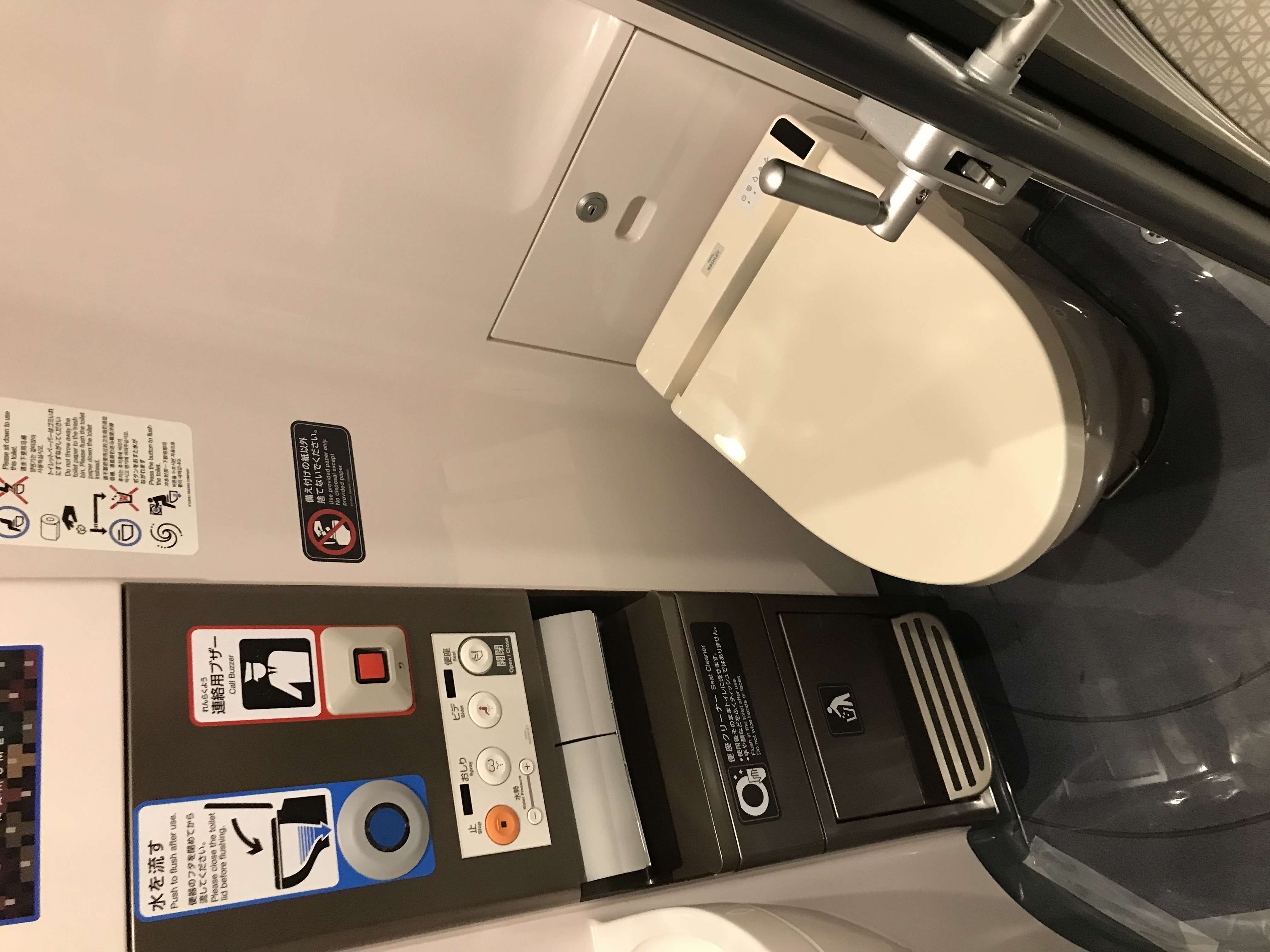

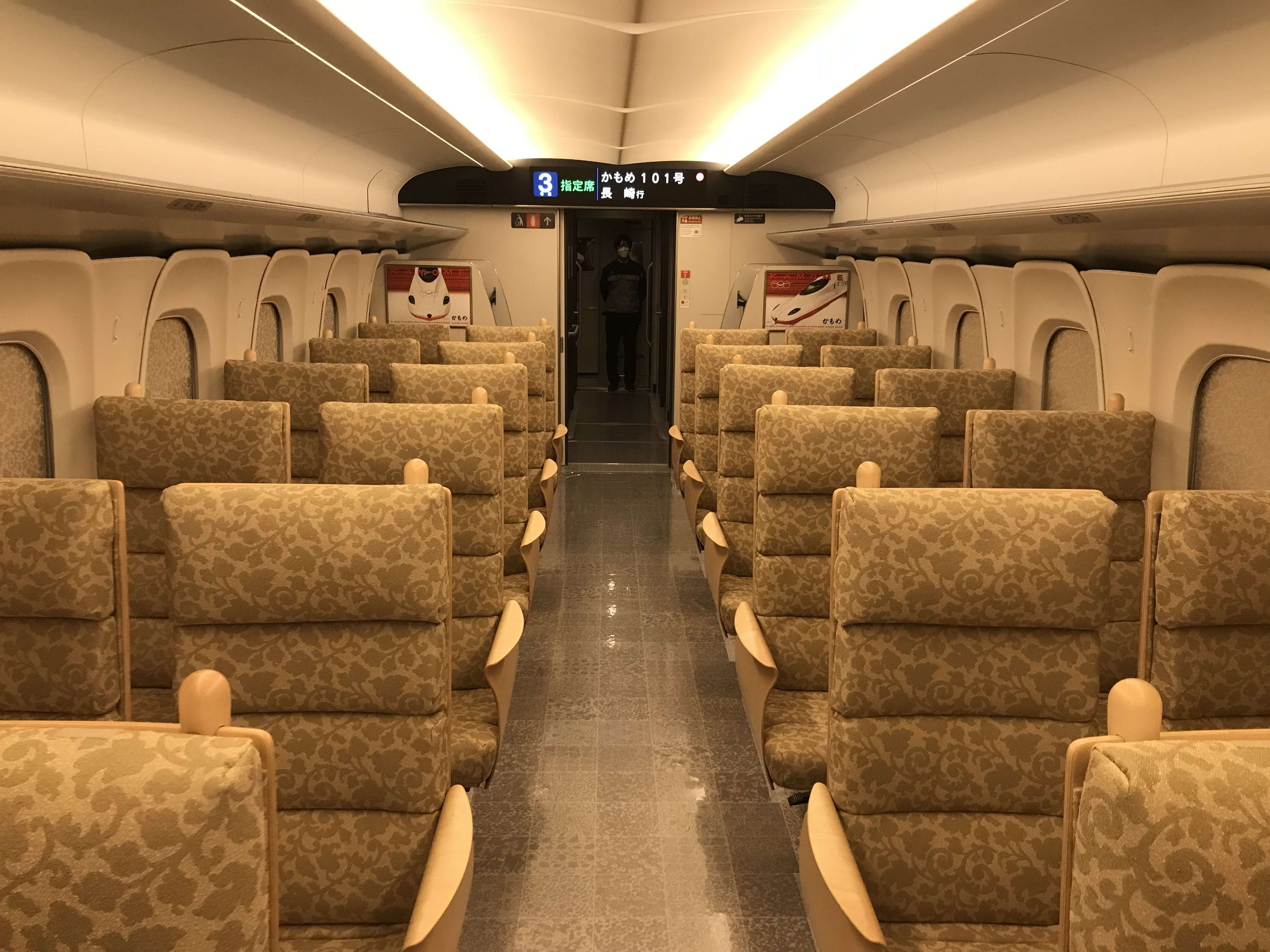
As I wrapped up my visit with The Scarlet Lady, I purchased some souvenirs for myself. I went a little crazy as today was a special event. Of all the things I’ve done during my collective nine months in Japan, this experience tops the list. I guarantee you, no other JET Program Participant, let alone study abroad student, will get the chance to see a brand new Shinkansen line, and train, before it enters revenue service.
Conclusion
I love trains, and I especially love the Shinkansen. Never in a million years did I think I would have the opportunity to visit a depot, let alone visit a new train (and line) before it entered revenue service. While I only spent about 30 minutes at the depot, I earned bragging rights. While my peers may eventually ride The Scarlet Lady to Nagasaki (or Hakata) one day, I will get to say I saw her first.
Author’s Note
I decided to experiment with some creative writing. While I do believe JR Kyushu’s N700S shinkansen is a beautiful locomotive, I took some artistic license with my descriptions.
One Reply to “Kamome: JR Kyushu’s Scarlet Lady”